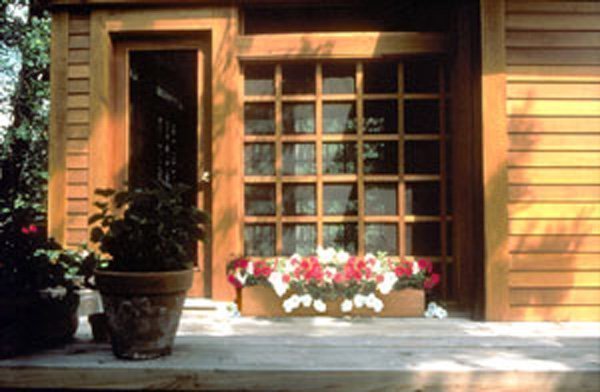Back
Back
Back
Back
Back
Back
Back
Back
Back
Back
USA & Canada
Building a Cedar Window Box in a Weekend

Sign up now for our DIY Project Newsletter

Turning the backyard into an outdoor living retreat is one of the hottest trends among American homeowners. It makes sense; with televisions, computers and phones in nearly every room of the house, the backyard deck is the final safe haven from life’s pressures. Escaping to a quiet corner of the yard provides a necessary respite.
Creating a truly relaxing setting takes more than a laid back approach. Whether you’ve just constructed a new deck or simply want to update your existing one, there are many ways to make it feel like a restful retreat.
One of the easiest ways to brighten and improve your outdoor living space is with flower window boxes made from all-natural western red cedar. These stylish boxes are simple to build and can dress up your front or backyard outdoor living space when filled with colorful flowers, herbs, vegetables, etc.
Here are a few considerations to remember when enhancing your outdoor living space with cedar window boxes, as well as building instructions:
Determining the Size Begin by custom designing the cedar window box to the window width. The box should be as wide as the window frame including trim. This width can vary based on personal preference, but the look of an equal width window box to the window frame is quite appealing. Additionally, use 1″ thick cedar for this project, thicker boards will increase the weight, and prove cumbersome for removal during the winter months or replanting in the spring.
If considering placing long plastic planters in the cedar window box rather than planting directly, buy the planters first as the depth, width and length will determine the cedar window box size. If planting within the box directly, the dimensions are not as critical.
The advantage of using plastic planters is so you can lift the planter out of the box to change soil or plants. This method is best for second story windows or any window too high to get to from the ground.
Building the Cedar Window Box Start by cutting 1″ thick cedar into the required pieces:
- Two pieces the same size for the front and back. These lengths should match the window width.
- Two pieces the same size for the sides. The size of these should reflect the width and depth you choose.
- One piece for the bottom. This piece should be the same length as the front and back, and two inches wider than the sides.
Next, pre-drill guide holes in the front and back pieces at each end. Repeat on the bottom piece but drill an additional one-inch hole in the middle to allow for drainage.
Now, glue the front and back pieces to the sides – be certain the correct sides are exposed outward. Waterproof wood glue works well. Then, using the pre-drilled holes as guides, screw the front and back pieces to the sides with 1-1/3-inch galvanized screws. These screws will provide ample stability and not react with the natural preservatives within the western red cedar.
Lastly, glue the bottom piece to the bottom of your window box and screw that into place as well. Then sand, prime and paint the window box if you desire.
Mounting Many mounting options are acceptable. For windows extended to or near the ground, simply place the window box under the window for a nice touch. For higher windows, begin the mounting process by drilling two 1/2-inch-diameter holes in the back of the cedar window box, approximately a quarter-way in from each end and 1-1/2-inch below the top edge. Holding the cedar window box in position under the window, hammer a 3/8-inch hanger bolt through each hole onto the house siding enough to make an indentation or mark.
Next, remove the window box and drill two 1/2-inch pilot holes at the indentation marks. When installing the hanger bolts, allow two inches of each bolt to protrude from the house. Hang the window box on the hanger bolts and screw a 3/8-inch washer and nut on the end of each bolt.
© 2025 All rights reserved
Gatsby Website Development by Jambaree